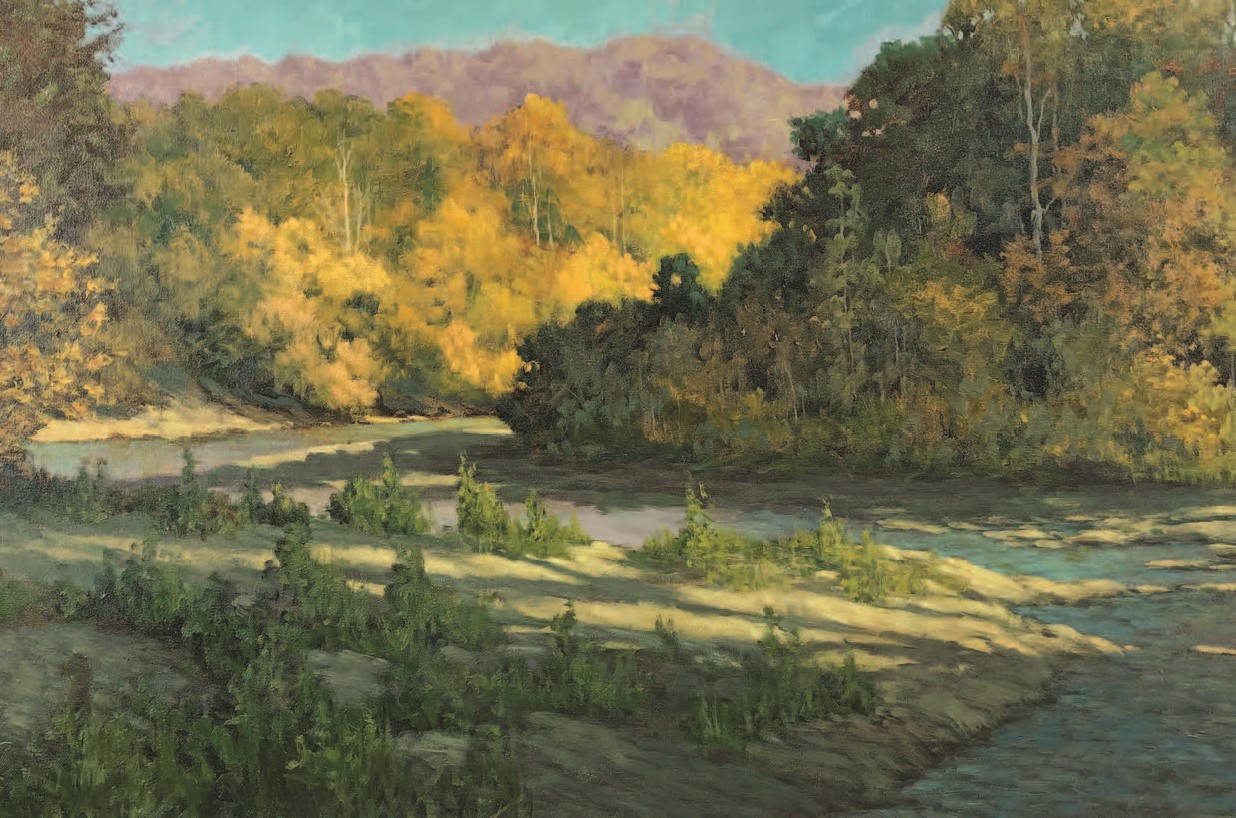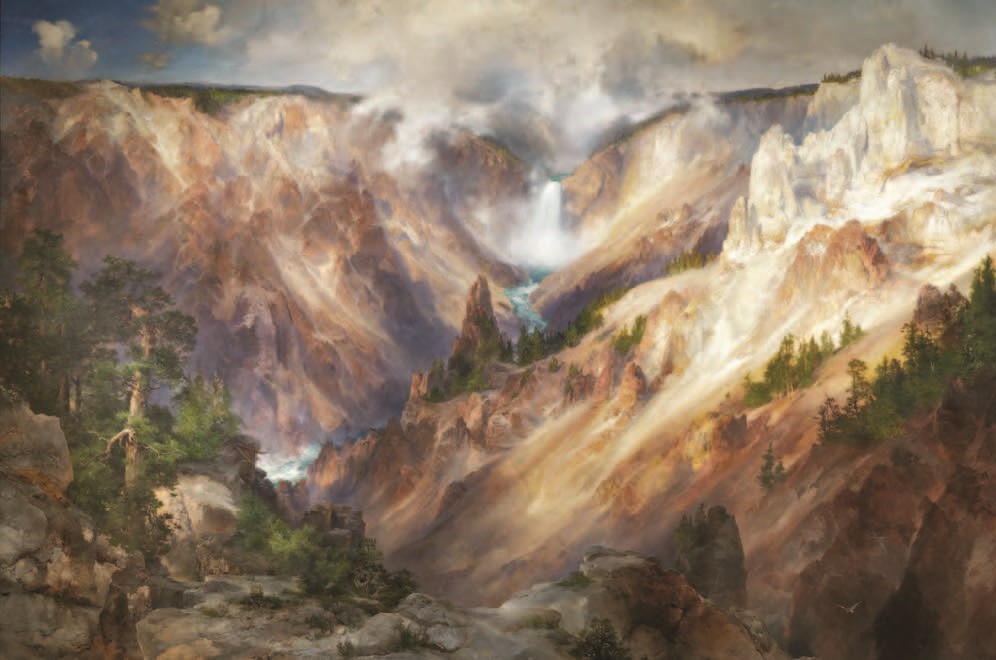During the isolation imposed by the Covid pandemic in 2020, I and a few other painters began to communicate online visually and verbally to preserve a sense of community and a splash of normalcy.
We were all members of the Indiana Plein Air Painters Association (plein air meaning outdoor in French). As the pandemic persisted, our Association’s scheduled gatherings were canceled, which was a loss. Those gatherings, held outdoors, provided
valuable inspiration, support and camaraderie for artists.
So I asked four artists in my circle if they wanted to take on a project focused on painting rivers in Indiana and then exhibiting the artwork when the pandemic receded. In the meantime, we would at least share our art projects among ourselves if not
with the public.
Art has the power to transform thinking and the way we see those places where a river runs through it.
Soon after we agreed to this project, Keith Halper, then president of the Indiana Division of the Izaak Walton League, caught wind of it. He viewed it as an opportunity to help the public appreciate the fragility as well as the beauty
of our rivers, streams and lakes.
As my group of painters learned more about the mission and history of the Izaak Walton League, we began to see how our art could generate awareness about the need for conservation. Art has the power to transform thinking and the way we see those places
where a river runs through it.
From these beginnings grew an ambitious art project, which was partially funded by a 2021 grant from the endowment of the Indiana Division of the League. We decided that including written narrative could add vital context and depth to the project, so
we enlisted three well-known Hoosier conservation writers to help.
The end result is the book, Indiana Waterways: The Art of Conservation, and a traveling exhibition of the paintings. The book contains three essays and more than 100 pages of the art we produced, all focused on the lakes, rivers and streams of
Indiana. The pages explore the beauty of waterways and also the challenges they face.
“The idea of combining two disciplines, art and writing for this project, was a stroke of genius,” said Dr. Jerry Sweeten, one of the writers for the project. “As a former college professor, I have seen how combining other course studies
with the science classes I taught helped the students see connections they otherwise wouldn’t have.”
A window into conservation
Sweeten might agree that true education comes from seeing how everything is connected to everything else. That is especially true in the arts. Thousands of people across Indiana love landscape art. There are thousands of Hoosiers who are painting landscapes
and even more who are buying them. But many of them are not conservationists.
As my group learned more about the mission and history of the Izaak Walton League, we began to see how our art could generate awareness about the need for conservation.
Connecting art to conservation helps new audiences to realize how conserving the natural beauty they love to see in art is valuable and essential to them—and not separate from them.
Typically, a landscape painting of a waterway reaches some emotion or memory in the viewer. But that connection does not necessarily translate into a commitment to conservation. So to help make those connections, we put conservation of these natural resources
facing forward in the project. As it progressed, we established a nonprofit, Art Nature Consortium, or ANC, to promote the connections between art and our natural resources.
The artists became the founding board members. We formed ANC hoping other artists will develop connections to what they love to paint, realizing the need to also restore and conserve it.
 "Whitewater River South of Brookville," oil painting by Dan Woodson.
"Whitewater River South of Brookville," oil painting by Dan Woodson.Viewing Indiana's Rivers
Over the course of about 20 months, each artist travelled across Indiana to create a visual record, in paint, of just a few of the 62,000-plus miles of waterways in the state.
What the artists found was neglect. The fires on Ohio’s Cuyahoga River that set off an ecological awakening in the 1970s no longer endanger our waterways. Instead, the artists and writers discovered today’s pollution problems are frequently
unseen—and certainly unrecognized by most.
The industry that we rely on to feed a great nation is slowly poisoning our waterways. As farms have increased in size, the need for efficiency has found new ways to drain standing water but at the cost of excess chemical nitrogen, pesticides and other
pollutants. Indiana’s waterways contribute about 11 percent of the sediment and nutrients that wash down the Mississippi River ultimately contributing to the red tides and dead zone in the Gulf of Mexico.
One of the essays in the book cites Indiana’s Save Our Streams Director Edward Wisinski discussing the work of the Indiana Division and the national office of the Izaak Walton League as it pursues its 100-year vision of protecting the nation’s
woods, waters and wildlife. If groups like the Izaak Walton League don’t continue to raise the alarm, who will?
“We’re trying to bring that to the public, not in a radical way, but in a common-sense way,” says Wisinski. “It’s a never-ending process. Just when we think we’ve crossed the bridge, so to say, we come up against another
flooded stream.”
Everywhere the artists went, people shared stories. A lot of Indiana history is hidden from plain view along the waterways, and the artists tried to find as much as they could. All the artists remarked that there are few miles of water where the public
can easily visit the riverside. Most are hidden from the public or accessible only by canoe, float or kayak. To help with that, Indiana has 360-plus public launch sites along waterways for boats.
Spreading the word—and the images
About two years after our initial gathering of five artists and work with three writers, we first exhibited some of the original paintings on October 16, 2022, at the Indiana State Museum. From there we added exhibits at the Fort Wayne Museum of Art in
2023, and then at the Minnetrista Museum’s Oakhurst House in Muncie on the White River. Close to 20,000 people have viewed the exhibitions thus far. We will complete the tour in December 2023 at the Hoosier Salon in New Harmony, on the Wabash
River.
The writers and artists in the project have given or scheduled more than 10 discussions around the state to continue this conversation and highlight the role of organizations like the Izaak Walton chapters and how the public can get involved in waterway
restoration and conservation.
About the Project
Artists featured in the project are John Kelty, Curt Stanfield, Avon Waters, Dan Woodson and Tom Woodson. The three writers contributing essays are Carson Gerber, Jason Goldsmith and Dr. Jerry Sweeten.
In addition to the Izaak Walton League in Indiana, funding for this project came from donations by hundreds of individuals as well as grants from the Indiana Arts Commission, Indiana Humanities, The Metzger Group, Butler University, the Clemens Vonnegut
Jr. House and the Eastern Woodland Carvers Club.
Learn more from Art Nature Consortium, a nonprofit with a mission to help artists promote art projects aimed at conservation awareness.
The Paintings that Set American Conservation in Motion
By Lisa Siegrist
It stands to reason that landscape painters revere nature. Its ruin would limit the subject matter they could depict. But in the mid-1800s, it was railroad companies focused on tourism that feared ruin and hired artists to depict the grandeur of iconic
landscapes like Yosemite and Yellowstone. Their key motivation was to spur legislation that would protect the wild beauty of these places—and promote their attractiveness to sightseers.
Painter Albert Bierstadt used bold colors and exaggerated Yosemite’s topography to wow an America that was tired of feeling overshadowed by Europe’s wonders. Yet Bierstadt was no pawn to his business patrons. He was a charter member of
the Boone and Crockett Club, an early conservation group. The wide popularity of Bierstadt’s majestic paintings played a key role in the 1864 law signed by President Lincoln that granted the Yosemite Valley to California as a protected reserve.
A few years later in 1870, the Northern Pacific Railroad was zealous to secure its status as the only passenger rail to Yellowstone. Knowing the visual power of the destination, the railroad hired landscape painter Thomas Moran and photographer William
Henry Jackson to accompany the survey team that would explore that region.
During the 40 days he spent out west, Moran made sketches of over 30 different sites, many published in Scribner’s Monthly. These images of the unique geological wonders of Yellowstone captivated audiences back east. Moran’s watercolors
and sketches prominently graced the U.S. Capitol as Congress and the public learned more about these western treasures.
In 1872, inspired by this artwork, Congress approved and President Grant signed the bill establishing Yellowstone as the first national park. Shortly after, Congress purchased Moran’s “Grand Canyon of the Yellowstone” as the first
painting that would hang in the U.S. Capitol. The mammoth painting, measuring 7 by 12 feet and condensing several of Yellowstone’s vistas into one scene, is credited with fueling the public’s interest in conservation.
Lisa Siegrist is a writer and former editor of American Art, a journal published by the Smithsonian American Art Museum.
 Thomas Moran's art helped convince Congress to create America's first national park in 1872. His painting "Grand Canyon of the Yellowstone" was purchased by Congress to be displayed in the Capitol.
Thomas Moran's art helped convince Congress to create America's first national park in 1872. His painting "Grand Canyon of the Yellowstone" was purchased by Congress to be displayed in the Capitol.
Top photo: "Chasing Shadows," White River in Davies County, Indiana. Credit: Oil painting by Curt Stanfield.